Japan’s Shinkansen or “bullet train” high-speed railway currently has twelve types of Shinkansen in service. Topping out at 332km/h or 206mph, these twelve Shinkansen separate into eighteen unique services that service nine central locations.
Current Shinkansen train series types operating today include:
- 500 Series
- E2 Series
- E3 Series
- E4 Series
- 800 Series
- N700 / N700A Series
- N700S Series
- 800 Series
- E5 Series
- E6 Series
- E7 / W7 Series
- H5 Series
Shinkansen Train Services
Eighteen train services run on Japan’s Shinkansen lines.
Nozomi
Runs on Lines: Tokaido and Sanyo Shinkansen Lines.
Rolling Stock: N700 Series.
The Nozomi is a fast Shinkansen service and runs from Tokaido and Sanyo. The Nozomi is the fastest route to the Kansai area of Kyoto, Kobe, and Osaka.
Tokyo To Kyoto Via The Shinkansen Explored Here
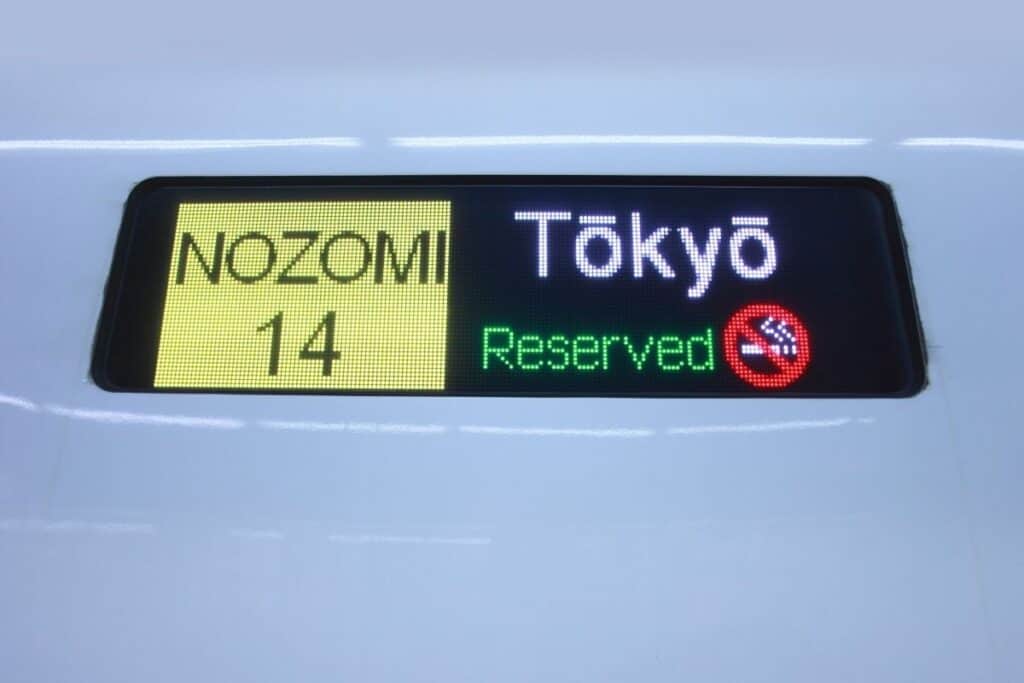
This Shinkansen is the fastest on the line, and it does not stop at smaller stations, just the more well-known stops.
Passengers on the Nozomi may not use the JR Rail Pass to travel. The JR Pass or “Japan Rail Pass” allows travelers to use virtually all the Japanese Rail systems nationwide. This pass is ideal for those who intend to travel the entire country.
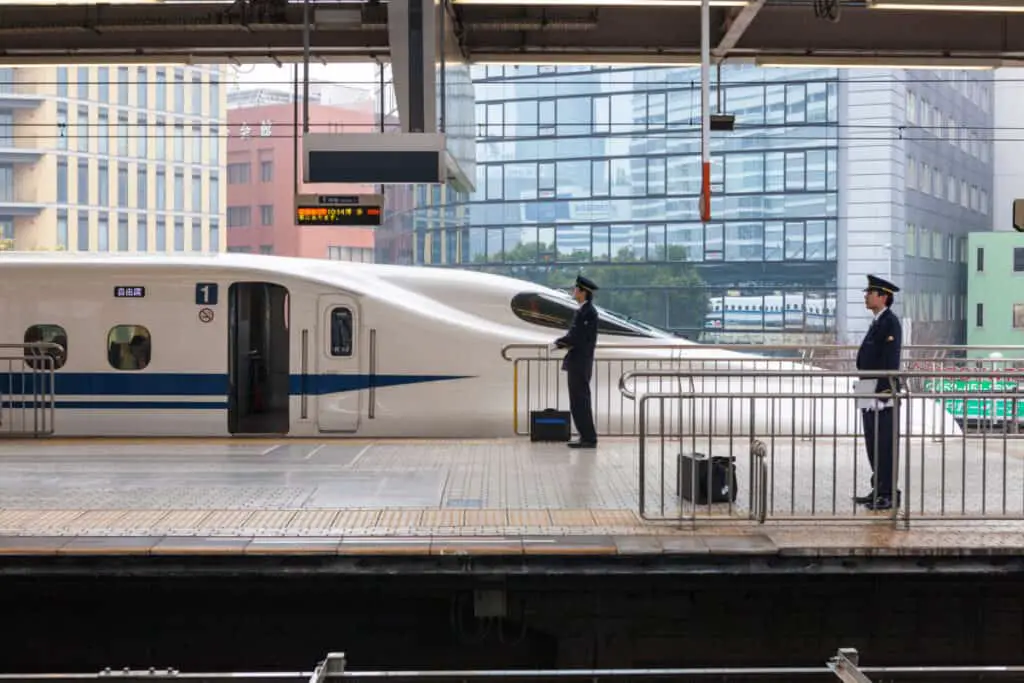
Hikari
Runs on Lines: Tokaido and Sanyo Shinkansen Lines.
Rolling Stock: 700/N700/N700A Series.
The Hikari is a semi-fast Shinkansen service and services Tokaido and Sanyo. The Hikari services users at multiple stops – these include Shizuoka, Nagoya, and Kyoto.
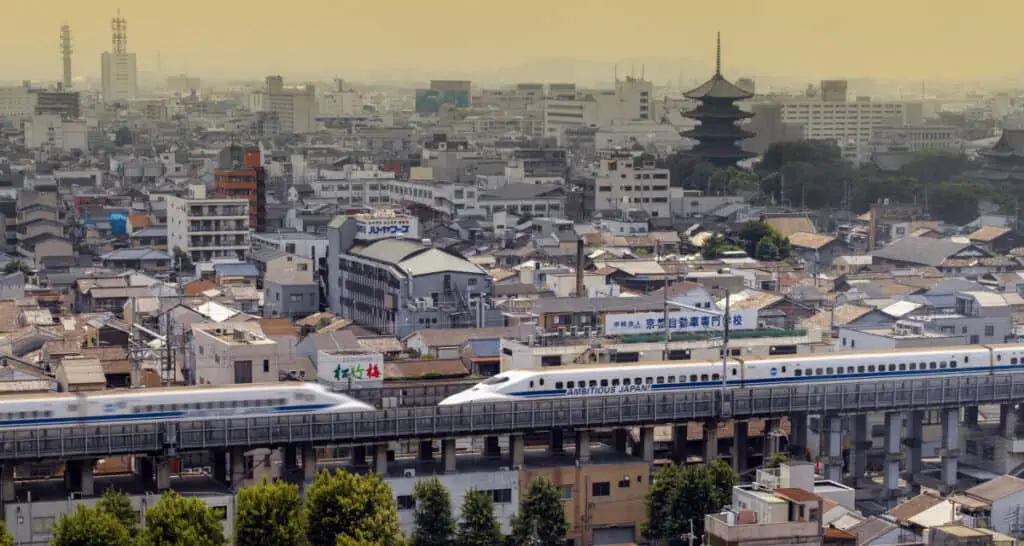
Hikari Rail Star
Runs on Lines: Sanyo Shinkansen Line.
Rolling Stock: 700/N700/N700A Series.
Hikari Rail Star is a semi-fast Shinkansen service and services Sanyo operating from Shin-Osaka to Hakata.
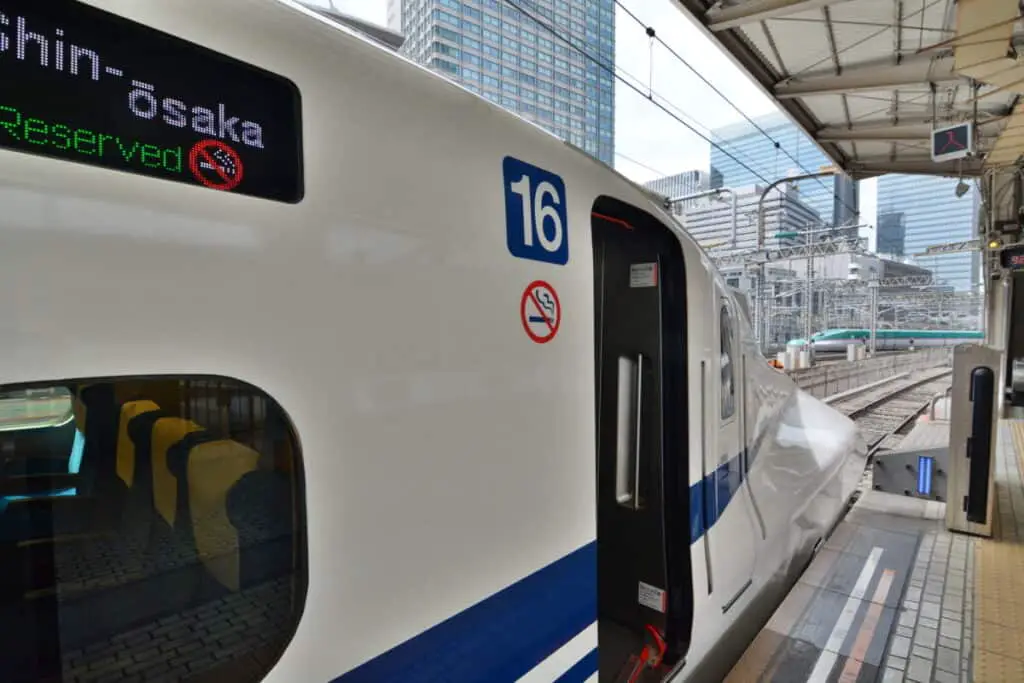
Kodama
Runs on Lines: Tokaido and Sanyo Shinkansen Lines.
Rolling Stock: 500/700/N700 Series.
Kodama is a local Shinkansen service and services Tokaido and Sanyo. The Kodama is the slowest Shinkansen for travel between large cities, as it stops at every station along the route.
Sakura
Runs on Lines: Kyushu Shinkansen and Sanyo Shinkansen.
Rolling Stock: 800/N700-7000/N700-8000 Series.
Sakura is a semi-fast Shinkansen service and services Sanyo and Kyushu. Many of the Sakura Shinkansen stops are identical to the Hikari Shinkansen stops (Including Hakata, Hiroshima, Shin-Kobe, and Kagoshima.)
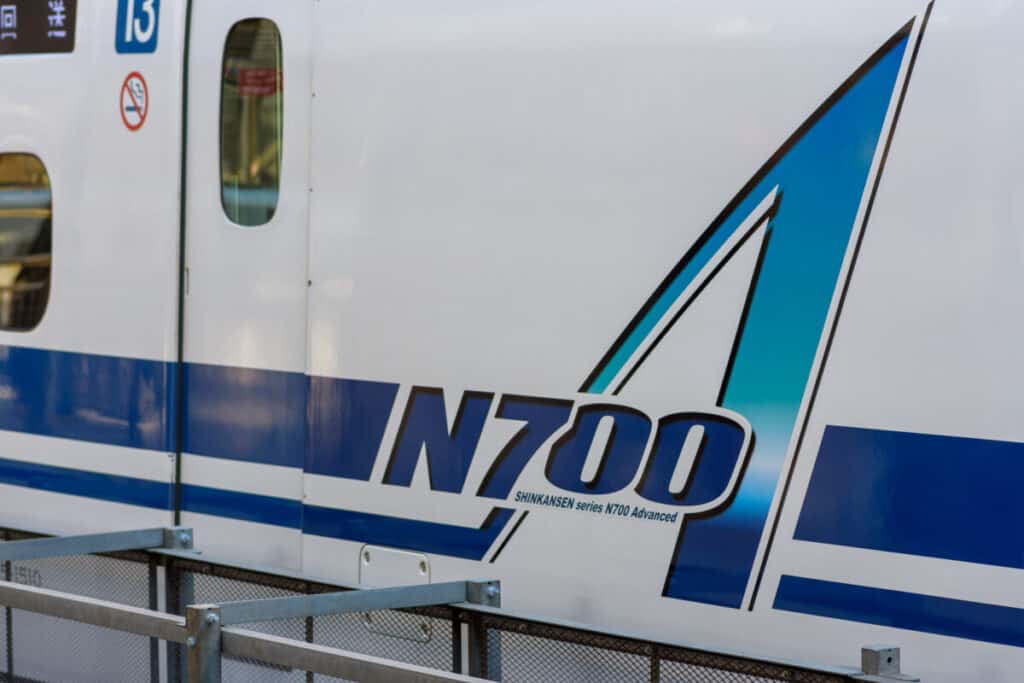
Mizuho
Runs on Lines: Kyushu Shinkansen and Sanyo Shinkansen.
Rolling Stock: N700-7000/8000 Series.
Mizuho is a fast Shinkansen service and services Sanyo and Kyushu, but that has limited stops. Mizuho stops include Shin-Kobe, Tokyo, Shinjawa, Shin-Yokohama, Hiroshima, and Hakata.
Tsubame
Runs on Lines: Kyushu Shinkansen.
Rolling Stock: 800/N700-7000/N700-8000 Series.
Tsubame is a local Shinkansen service and services Kyushu and runs between Hakata and Shin-Yatsushiro. The Tsubame services all stations on the line.
Hayabusa
Runs on Lines: Tohoku Shinkansen and Hokkaido Shinkansen.
Rolling Stock: E5 and H5 Series.
Hayabusa is a fast Shinkansen service and services Tohoku and Shin-Hakodate-Hokuto. The Hayabusa stops include Tokyo, Shin-Aomori, Kikonai, Ninohe, and Kitakami.
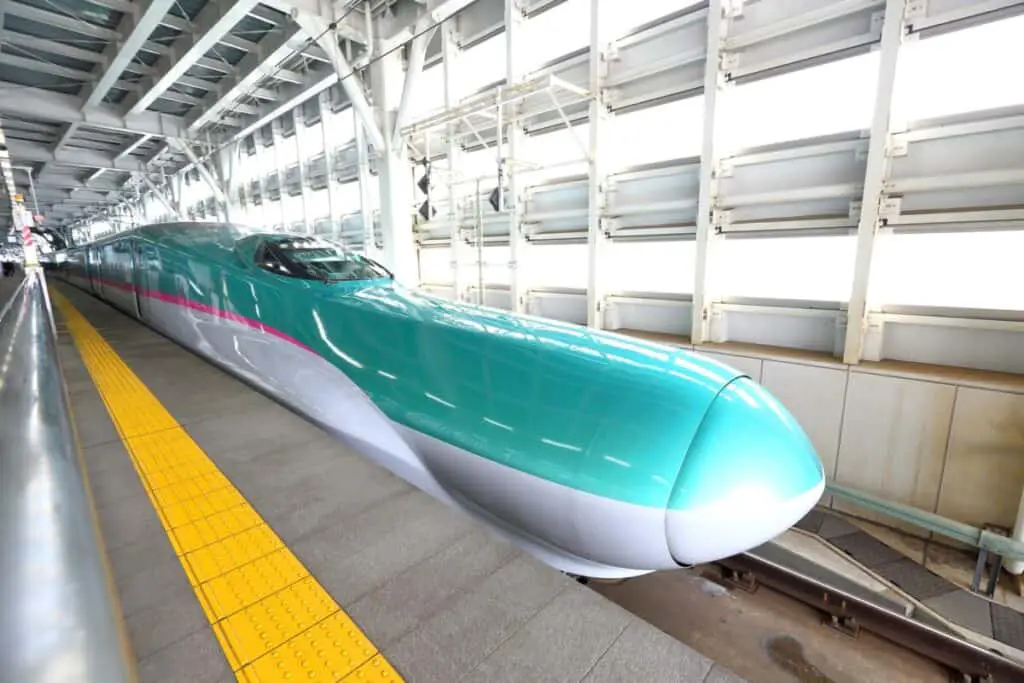
Yamabiko
Runs on Lines: Tohoku Shinkansen.
Rolling Stock: E2, E3, E5, E6, and H5 Series.
Yamabiko is a semi-fast Shinkansen service and runs between Tokyo and Morioka, servicing Tohoku.
Nasuno
Runs on Lines: Tohoku Shinkansen.
Rolling Stock: E2, E3, E5, E6, and H5 Series.
Nasuno is a local Shinkansen service and runs between Tokyo and Koriyama, servicing Tohoku.
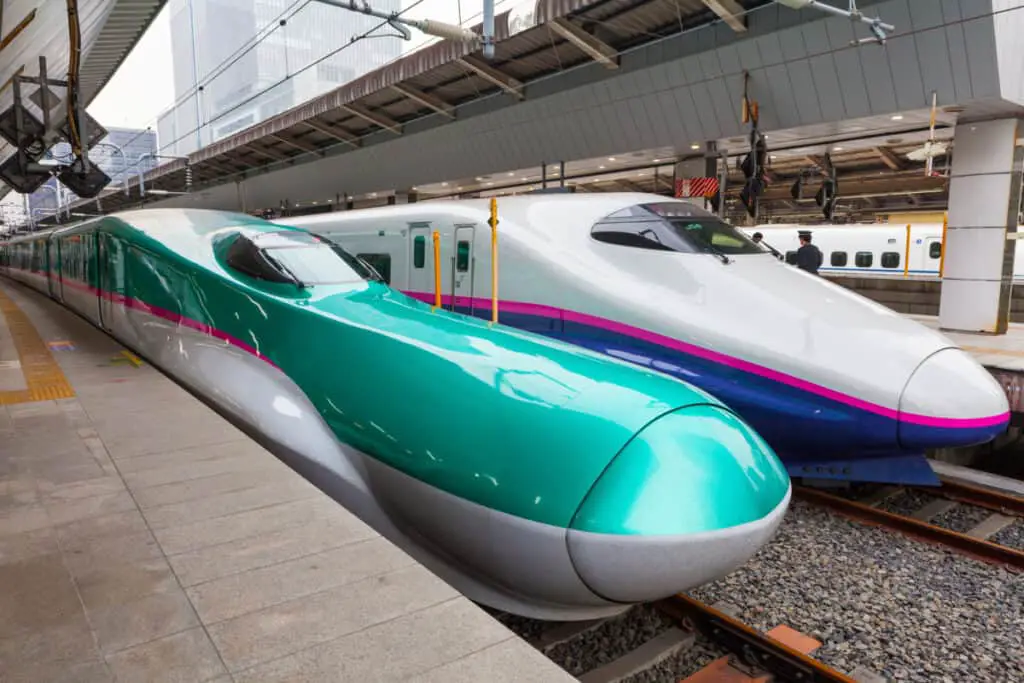
Komachi
Runs on Lines: Tohoku Shinkansen and Akita Shinkansen.
Rolling Stock: E6 Series.
Komachi is a fast Shinkansen service and runs between Tokyo and Akita. The Komachi is unique because it is the only service that runs on the Akita Shinkansen. Station stops include Morioka, Shizukuishi, Kakunodate, Tazawako, Akita, and Omagari.
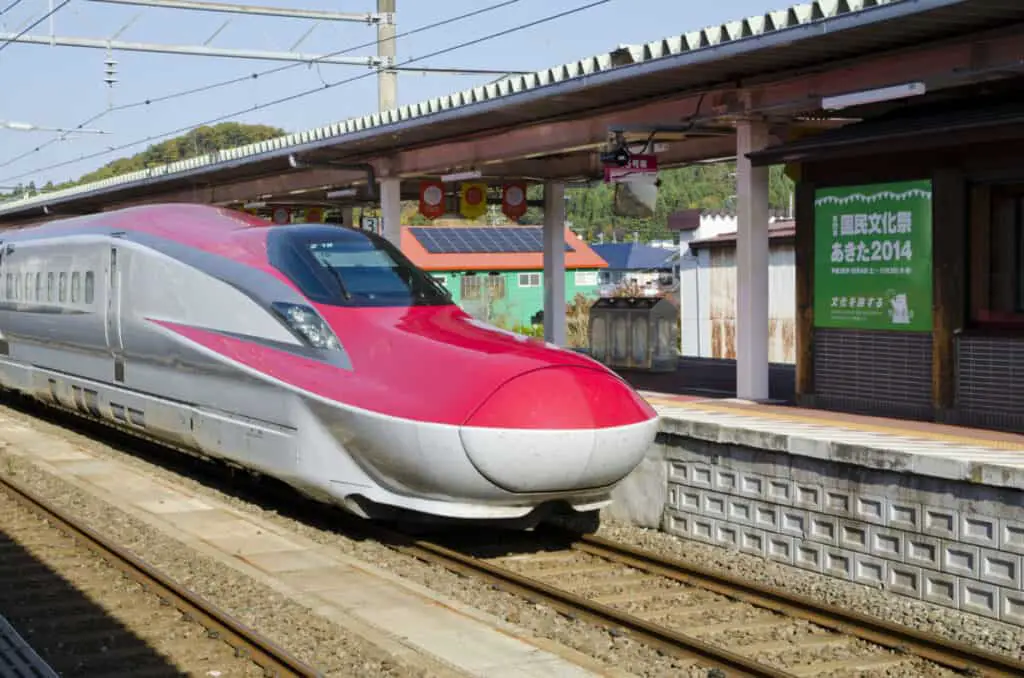
Tsubasa
Runs on Lines: Yamagata Shinkansen.
Rolling Stock: E3 Series.
Tsubasa is a fast Shinkansen service that runs between Tokyo and Shinjo, and stops include Yamagata and Fukushima.
Toki /Max Toki
Runs on Lines: Joetsu Shinkansen.
Rolling Stock: E2 and E7 Series.
Toki / Max Toki is a semi-fast Shinkansen service and runs from Tokyo to Niigata and services Joetsu. Toki / Max Toki stops include Omiya, Tokyo, Takasaki, and Jomo-Kogen.
Tanigawa
Runs on Lines: Joetsu Shinkansen.
Rolling Stock: E2 and E7 Series.
Tanigawa is a local Shinkansen service and runs from Tokyo to Echigo-Yuzawa, servicing Joetsu. The Tanigawa services every stop between Tokyo and Echigo-Yuzawa.
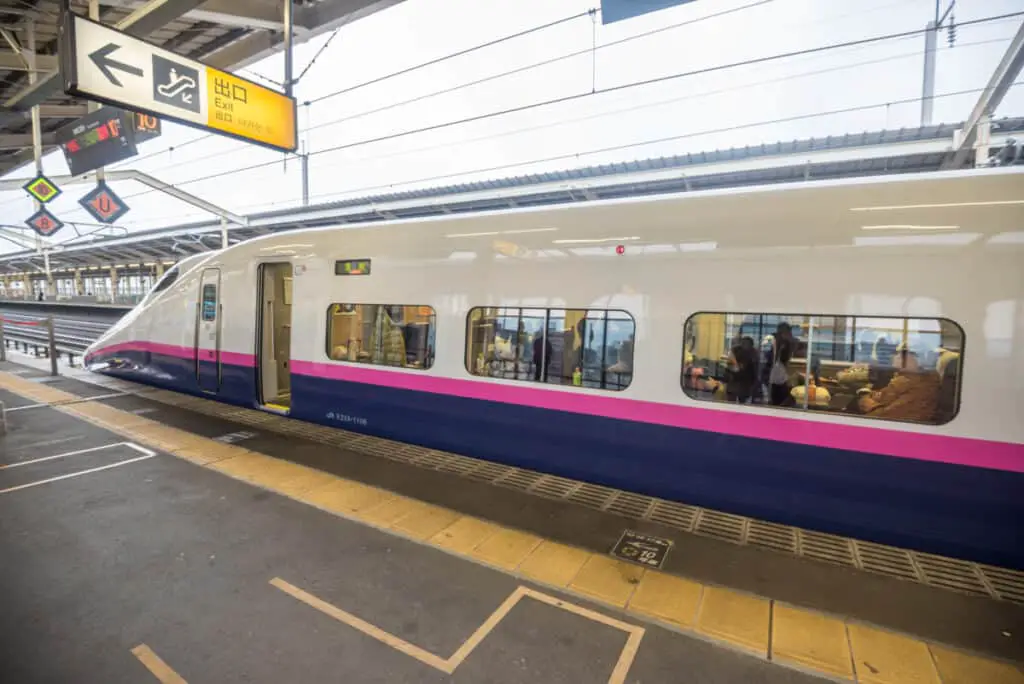
Kagayaki
Runs on Lines: Hokuriku Shinkansen.
Rolling Stock: E7 and W7 Series.
Kagayaki is a fast Shinkansen service and services Hokuriku. Known for being the fastest train on the Hokuriku Shinkansen line, the Kagayaki runs from Kanazawa and Tokyo. Stops include Nagano, Toyama, and Omiya.
Hakutaka
Runs on Lines: Hokuriku Shinkansen.
Rolling Stock: E7 and W7 Series.
The Hakutaka is a semi-fast Shinkansen service and runs from Tokyo to Janazawa servicing Hokuriku. Stops include Toyama, Omiya, Ueno, Kanazawa, and Nagano.
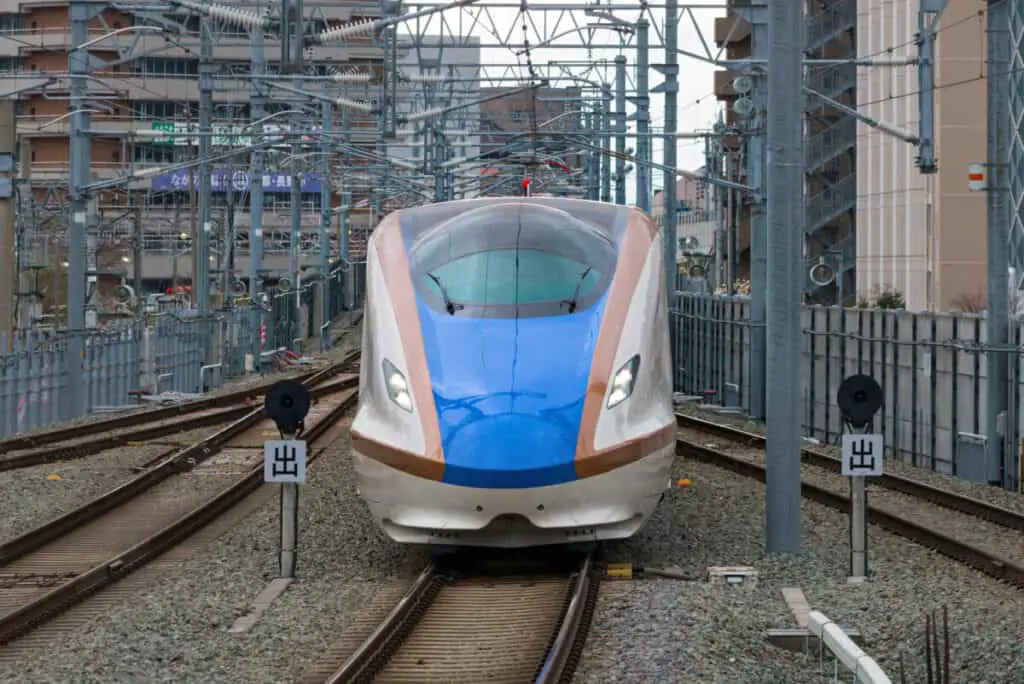
Tsurugi
Runs on Lines: Hokuriku Shinkansen.
Rolling Stock: E7 and W7 Series.
The Tsunrugi is a local Shinkansen service and runs from Toyama to Kanazawa servicing Hokuriku. Stops include Toyama, Kanazawa, and Shin-Takaoka.
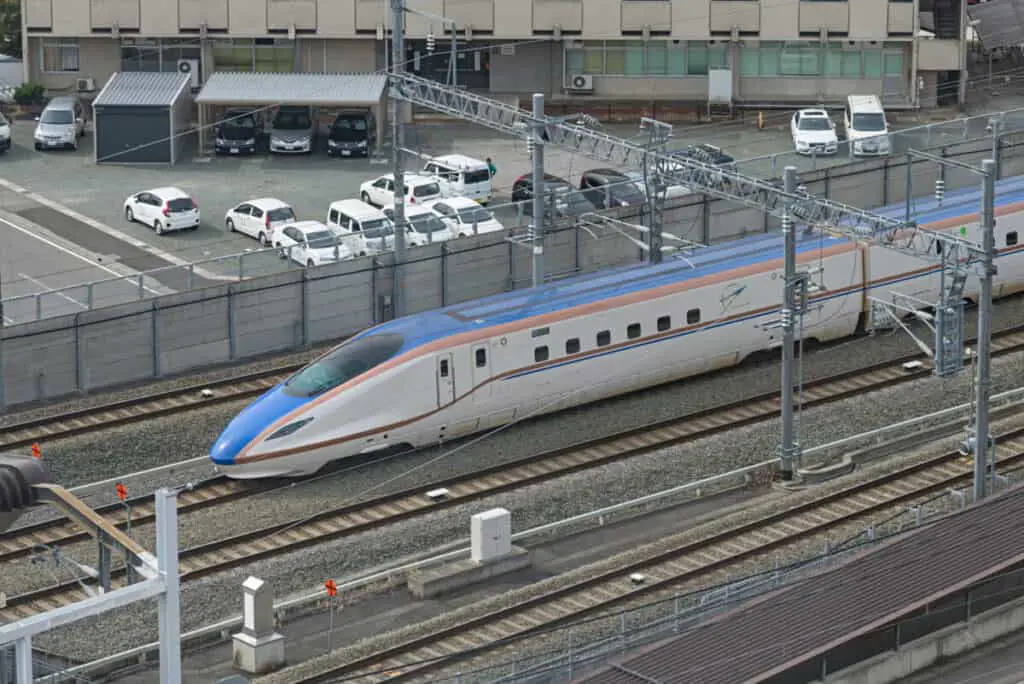
Asama
Runs on Lines: Hokuriku Shinkansen.
Rolling Stock: E7 and W7 Series.
Asama is a local Shinkansen service and runs from Tokyo to Nagano servicing Hokuriku. Asama station stops include Ueno, Nagano, Sakudaira, and Takasaki.
Shinkansen Train Series
500 Series
The 500 Series Shinkansen is a product of German industrial designer Alexander Neumeister, introduced in 1997. Engineers built just nine of the 500 series trains, and while debuted via the Nozomi Shinkansen service, they later serviced between Hakata and Shin-Osaka.
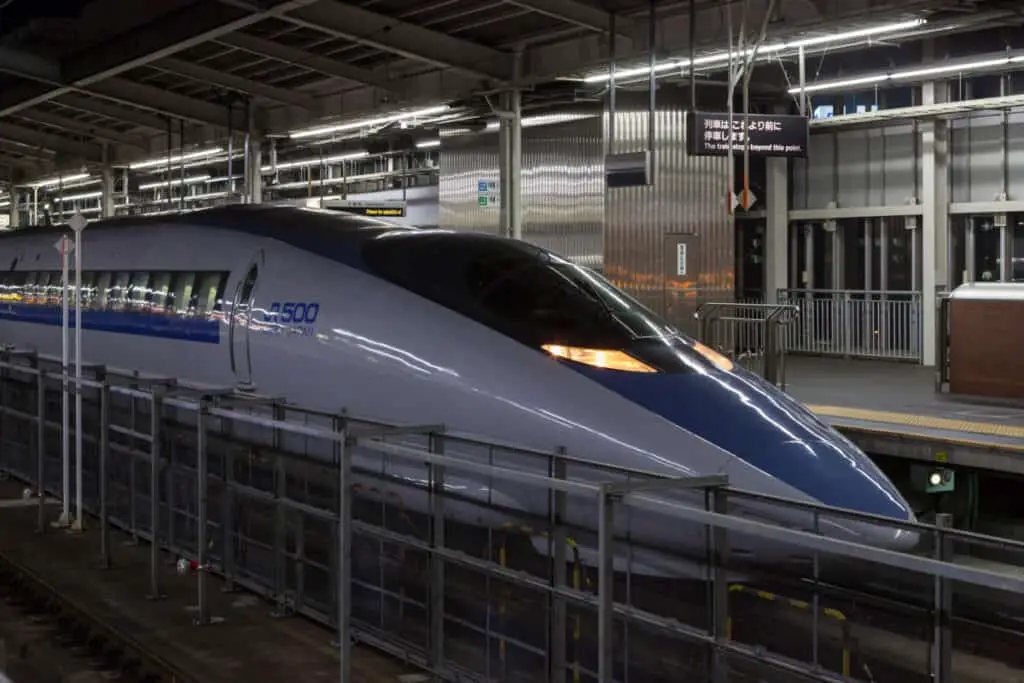
The 500 Series reaches a top speed of 186 mph and was unique at the time of its development.
- More aerodynamic due to a redesign of the nose.
- Less noisy due to dampers between cars.
- Faster than the previous Shinkansen.
- Added to passenger comfort.
Today the 500 Series is found on the Sanyo Shinkansen Line.
E2 Series
The E2 Series Shinkansen high-speed train has been operating on Japan’s high-speed Shinkansen lines since 1997. Only 502 of these trains were built (between 1997 and 2010), and in 2013 E2 Shinkansen withdrawals began.
The E2 Series tops out at a maximum speed of 170 mph, and each train comes with either eight or ten cars. The E2 series cars also combine with trains from the E3 series cars.
The E2 Series runs on the Tohoku Shinkansen, Joetsu Shinkansen, and the Hokuriku Shinkansen.
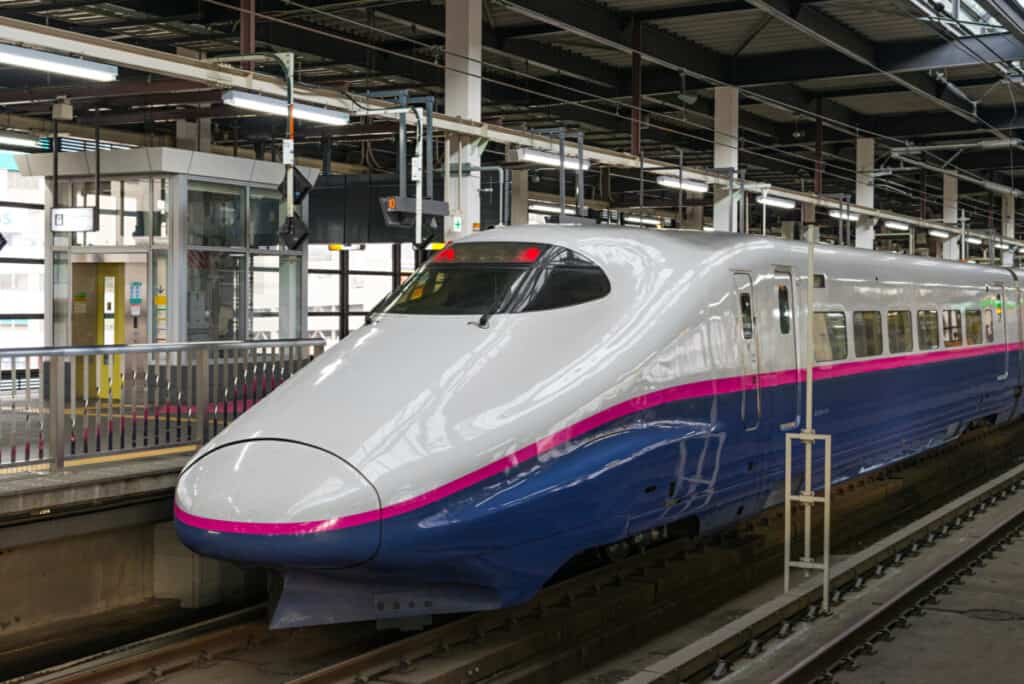
E3 Series
The E3 Series Shinkansen was a project overseen by industrial designer, Kenji Ekuan. Engineers timed the manufacturing of the E3 Shinkansen series to coincide with the new Akita Shinkansen line opening. The E3 was initially used on the Komanchi services but later used on the Tsubasa and Yamagata Shinkansen lines.
The E3 Shinkansen series reaches a top speed of 170 mph and is designed specifically to meet the requirements of smaller Shinkansen lines.
Today the E3 Series runs on the Yamagata Shinkansen and the Akita Shinkansen lines.
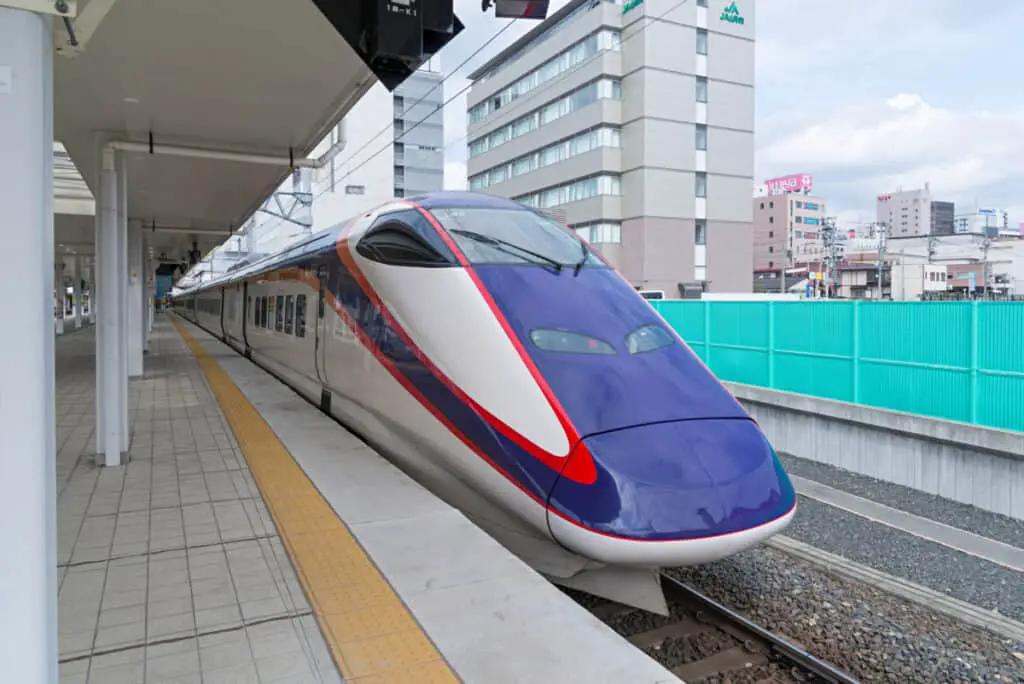
E4 Series
The E4 Series Shinkansen is unique in that it offers double-decker cars that hold more commuters for high-traffic areas like Tokyo. Introduced in 1997, each E4 Shinkansen has eight-car sets that can couple to create a sixteen-car train that accommodates 1,634 passengers.
Today the E4 Series runs on the Tohoku Shinkansen, Joetsu Shinkansen, and Hokuriku Shinkansen lines.
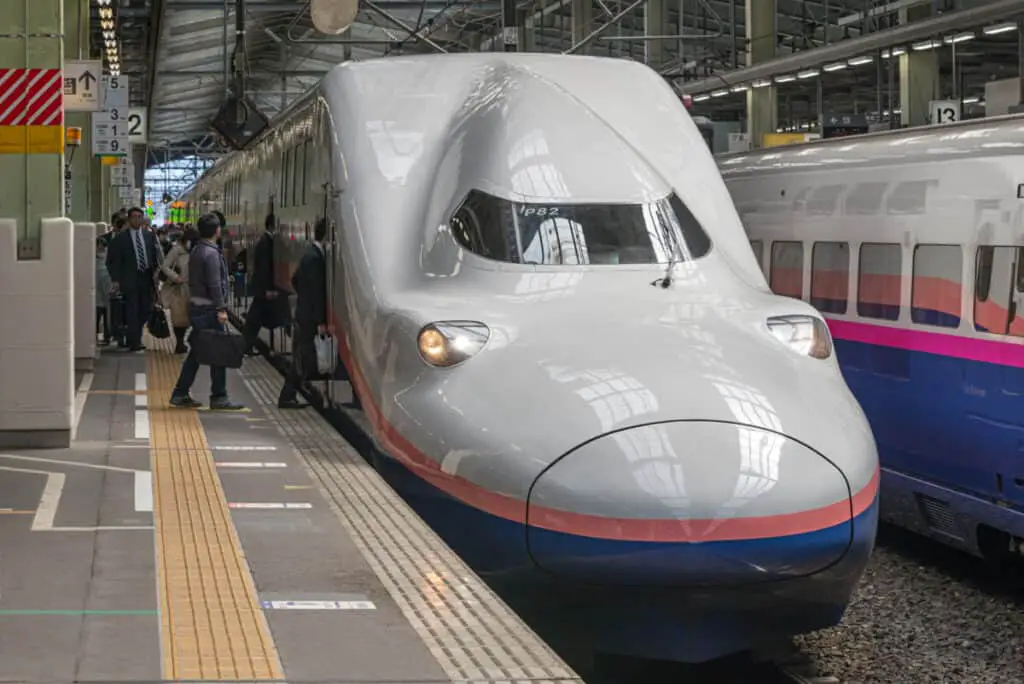
700 Series
Designed by Japan Rail Central and Japan Rail West, the 700 Series Shinkansen first began production in the late 1990s. Recognized as one of the next-generation Shinkansen, the 700 has a distinct flattened nose to lessen the “piston effect” as the train enters tunnels.
The “piston effect” references the airflow that a train forces into a tunnel as it enters. The piston effect is of interest to railway workers because the more air the train forces into the tunnel, the more stress the interior structures of that tunnel experience.
The 700 series Shinkansen tops out at 186mph and runs on the Sanyo Shinkansen and Tokaido Shinkansen lines.
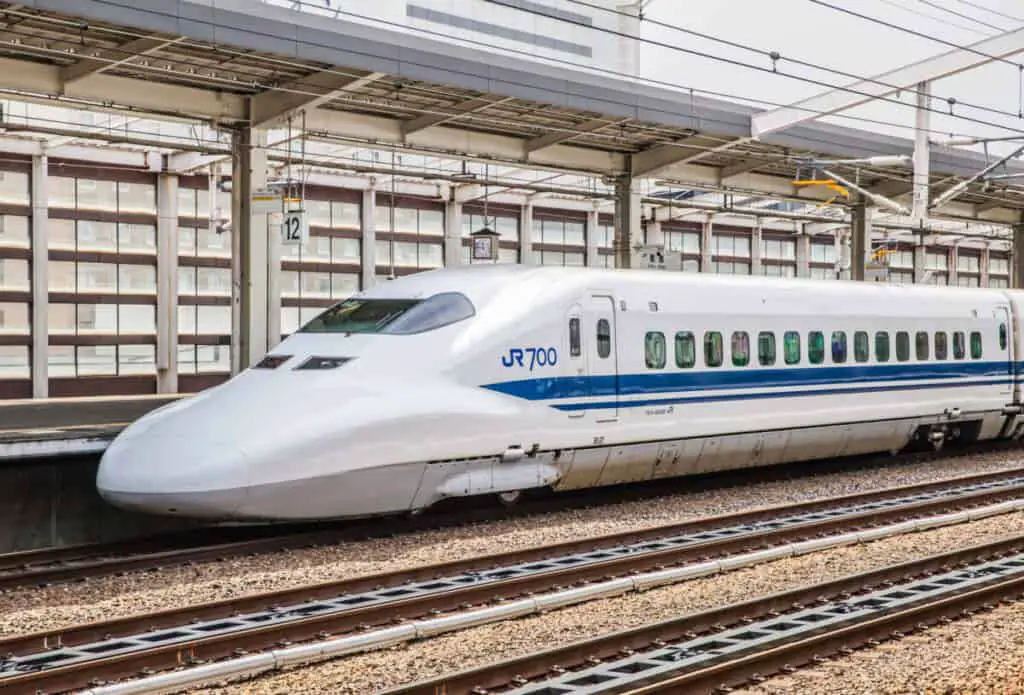
N700 / N700A Series
The N700 Series Shinkansen is an upgrade of the 700 Series, modified to allow the train to tilt on sharp curves. The N700 first hit the Shinkansen tracks in 2007.
Although introduced on the Tokaido Shinkansen and Sanyo Shinkansen lines, four years later, the N700 debuted on the Kyushu region Shinkansen line in 2011.
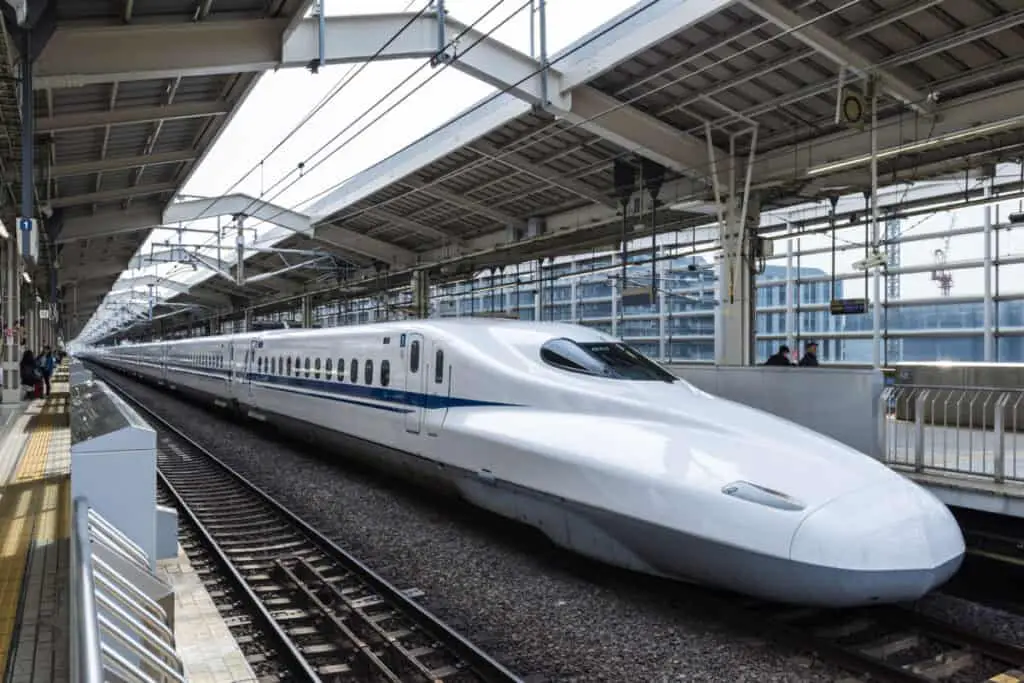
The N700A Series is the second incarnation of the N700. This Shinkansen reincarnation allowed the train to reach higher speeds when taking curves. Introduced in 2013, the N700A became the ideal, and engineers installed N700A technology in every N700.
The N700A Series has a maximum high-speed of 186mph and currently runs on the Tokaido Shinkansen, Sanyo Shinkansen, and Kyushu Shinkansen lines.
N700S Series
Released in 2020, the N700S Series Shinkansen became the sixth generation N700 Shinkansen series and improved upon the design, comfort, and technology of the N700.
A lithium-ion battery-powered self-propulsion system is one of the most significant additions to the N700S (S stands for “supreme”). This battery allows the N700S to continue activity even during power outages or natural disasters (like earthquakes.)
The N700S reaches maximum speeds of 206mph and currently only runs on the Tokaido Shinkansen line.
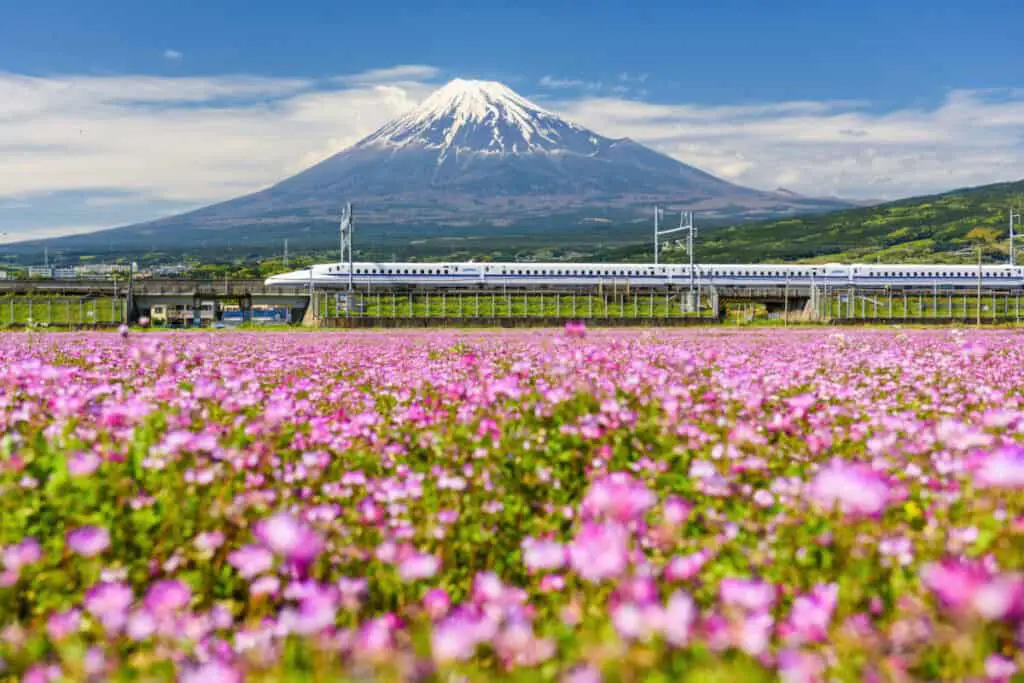
800 Series
The 800 Shinkansen series eliminated the bill-like nose of the 700 series and replaced it with a conical design. The change in the Shinkansen nose design earned the 800 Series a 2005 Laurel Prize.
The Laurel Prize is an annual Japanese award for railway vehicles that came into service in the prior year. Individuals on the Laurel Prize Selection Committee vote on railway vehicles based on their functional and design-based features.
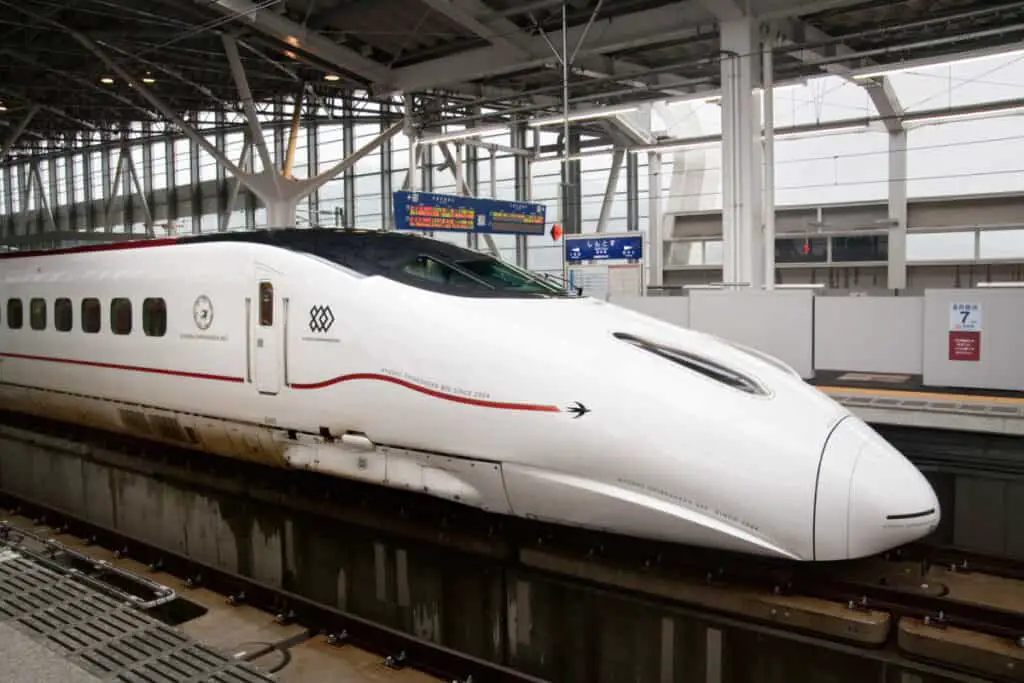
The 800 Shinkansen series was first introduced to the Kyushu Shinkansen line in 2004 and shortly after it debuted in Tsubame.
The 800 Series Shinkansen currently still runs on the Kyushu Shinkansen and Tsubame Shinkansen lines.
E5 Series
The E5 Shinkansen series further advanced the Shinkansen as it introduced an active electric suspension and featured upgraded technology found in the Fastech 360S train.
The Fastech 360S Shinkansen revolutionized the Shinkansen by incorporating an arrow-shaped cab at one end of the train and a streamlined cab at the other. It was the arrow-shaped cab that served as inspiration for future Shinkansen like the E5 Shinkansen series.
The E5 Shinkansen tops out at a maximum speed of 200mph and runs on the Tohoku Shinkansen and Hokkaido Shinkansen Lines.
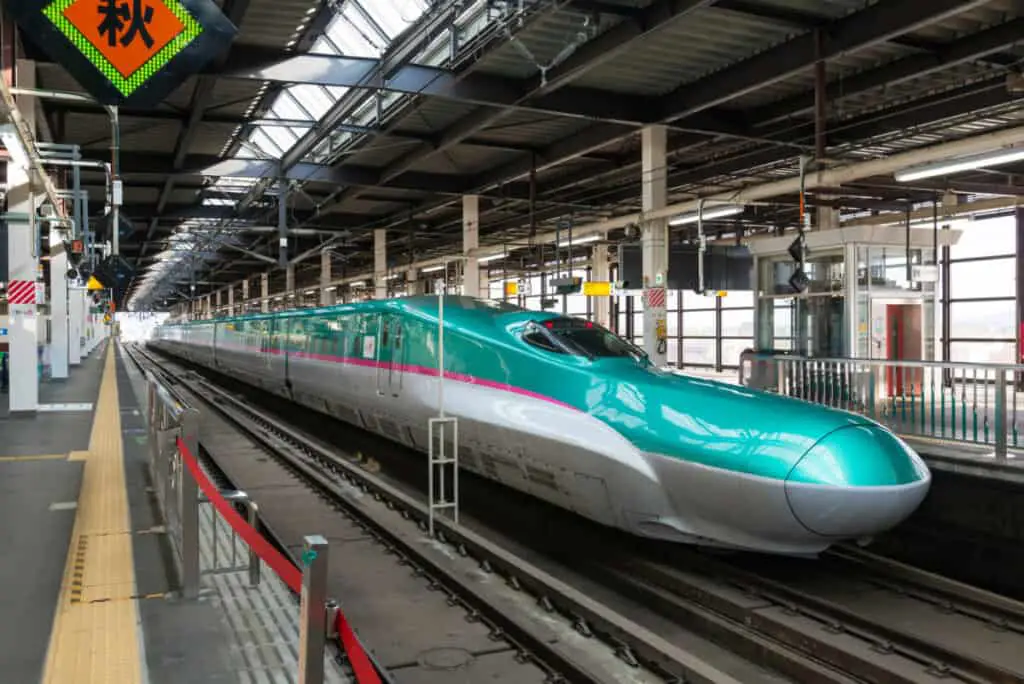
E6 Series
The E6 Series Shinkansen are smaller Shinkansen trains built specifically for the “mini-shinkansen” tracks on the Tohoku and Akita Shinkansen (Tokyo to Akita) lines. After its introduction, the E6 Series Shinkansen replaced any E3 model Shinkansen in use on Komanchi tracks.
The E6 Series Shinkansen tops out at a maximum speed of 200mph and currently only runs on the Akita Shinkansen line.
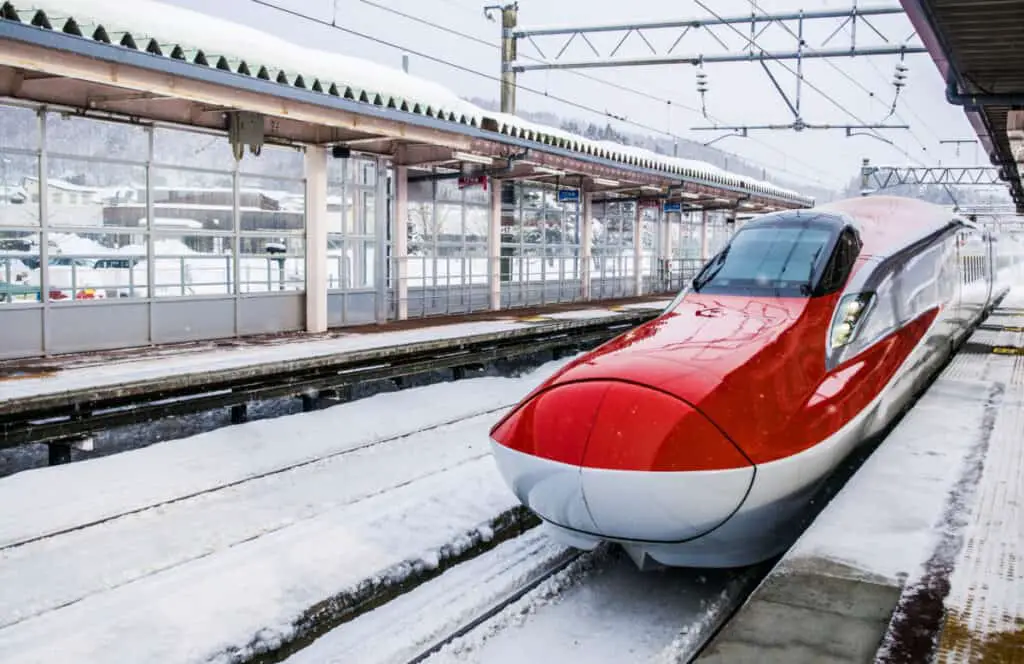
E7 / W7 Series
The E7 Shinkansen went back to the original design of the E2 Shinkansen series and took a more whimsical approach to interior décor and exterior design with a Japanese theme.
At the same time that the E7 Shinkansen was under production, so too was the W7. The W7 has twelve cars, and upon its release in 2015, this Shinkansen received the Blue-Ribbon Award from the Japan Railfan Club.
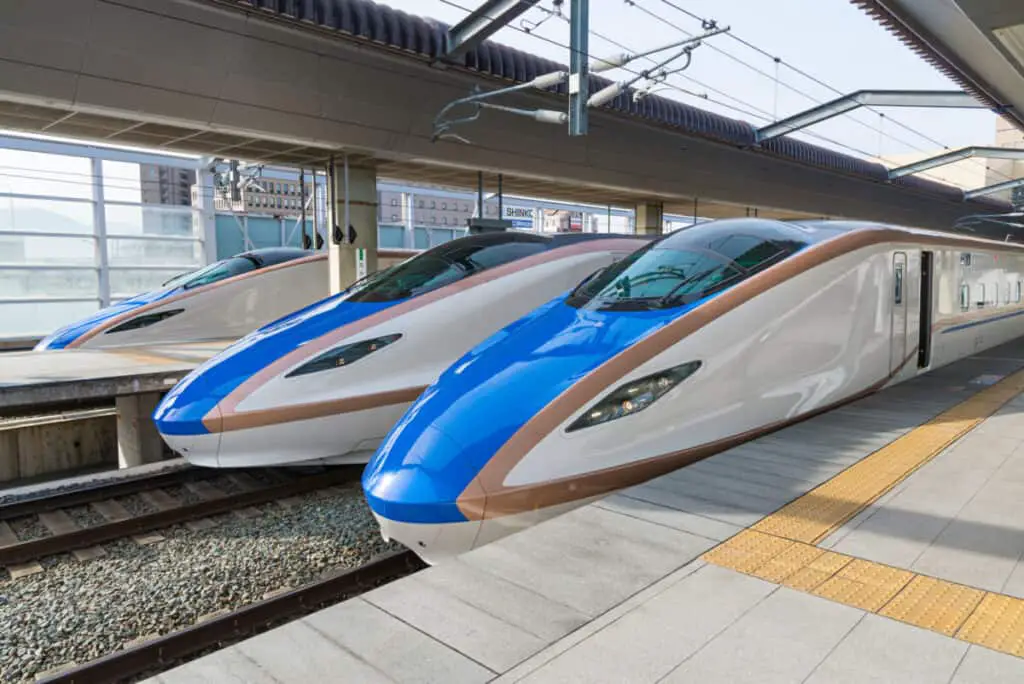
The Blue-Ribbon Award is a railway award awarded to the “most popular and outstanding design railway vehicle that entered service in the previous year.”
Introduced in 2013, the E7/W7 tops out at a maximum speed of around 170mph. This Shinkansen currently runs on the Hokuriku Shinkansen and Joetsu Shinkansen lines.
H5 Series
The H5 Shinkansen Series work in tandem with the E5 Shinkansen trains on the Hokkaido Shinkansen and Tohoku Shinkansen lines. Unlike the E5, however, the H5 also incorporates a superior snowplow and an underframe made from stainless steel designed to protect the electronic components of the train in colder weather.
First introduced in 2016, the H5 Shinkansen Series tops out at a maximum speed of 200mph. The H5 currently runs on the Hokkaido Shinkansen and Tohoku Shinkansen lines.
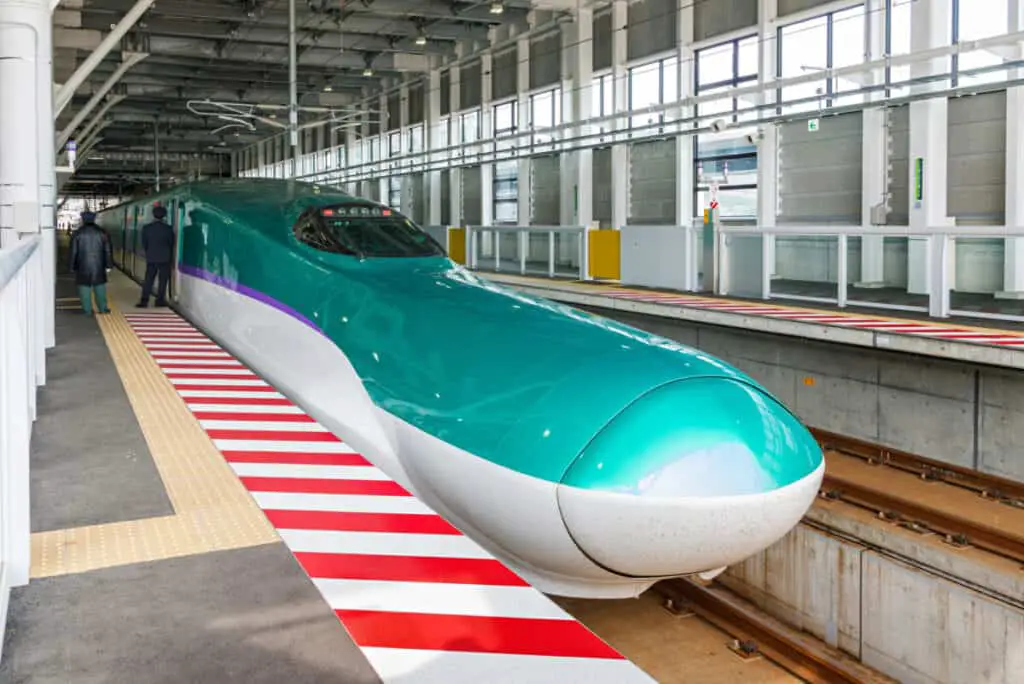
Future Shinkansen Trains
The Shinkansen is constantly evolving, and even now, there are plans for two future Shinkansen vehicles – the E8 and the L0 – Maglev Series.
The E8 tops out at 186mph, and engineers expect it to debut in 2024. Officials expect the E8 to replace the E3 series Shinkansen and put the older trains into retirement.
One of the best ways to experience the Shinkansen is by using the Japan Rail Pass. Read our article about saving money and getting to experience Japan by exploring Japan’s cities, towns and countryside via the bullet train.
How To Ride The Shinkansen Explored Here
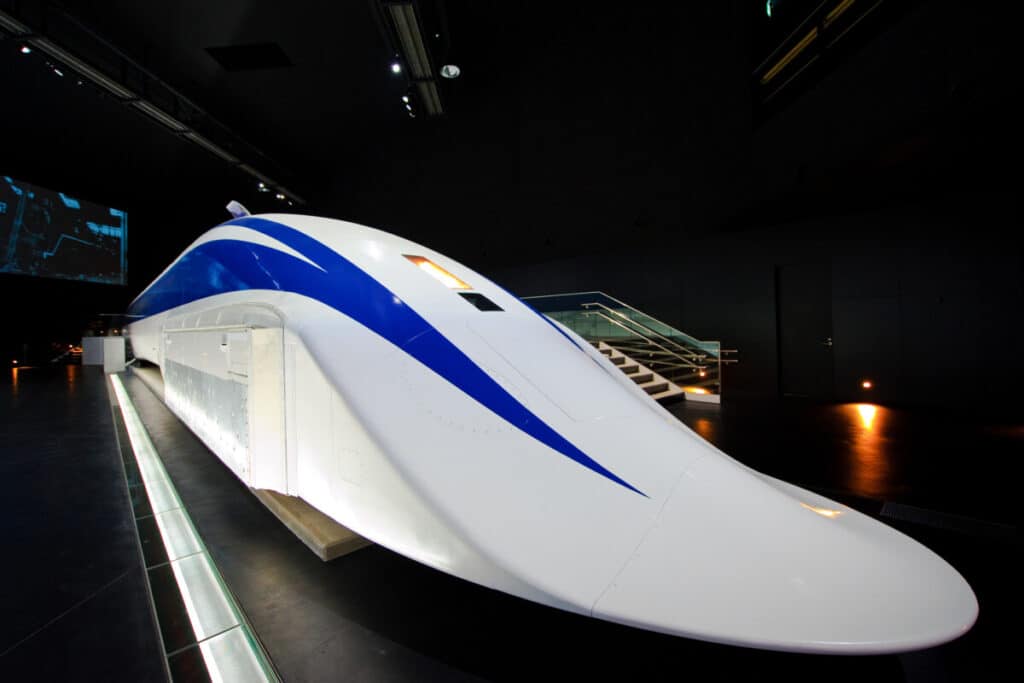
Expected to debut in 2027, officials intend the L0-Maglev Shinkansen Series to be the fastest Shinkansen to date, topping out at 310mph.










